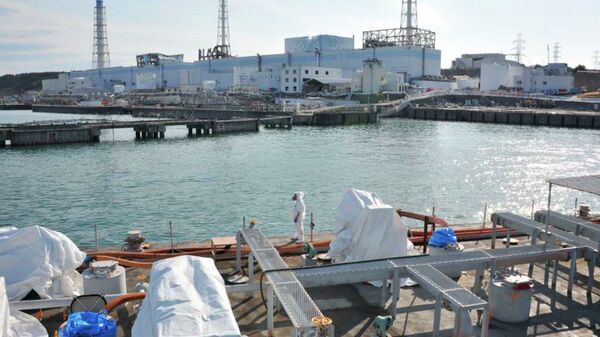MOSCOW, October 18 (RIA Novosti), Ekaterina Blinova – Radiation levels at Japan’s notorious Fukushima Nuclear Power Plant jumped after the plant was hit earlier this month by two typhoons: Phanfone and Vongfong.
"The back-to-back weather disturbance typhoons Vongfong and Phanfone had triggered the elevated radiation quantities at the plant," writes the International Business Times, citing NHK, Japan's state-run media outlet.
According to Japan's JIJI agency, levels of cesium, a radioactive isotope that causes cancer, are three times higher than their previously registered rates and are currently 251,000 becquerels per liter, while levels of tritium, another dangerous isotope, have grown as high as 150,000 becquerels.
Tepco's (Tokyo Electric Power Co.) spokesperson emphasized that heavy rainfall triggered by Typhoon Phanfone had apparently impacted Fukushima's groundwater.
"In addition, materials that emit beta rays, such as strontium-90, which causes bone cancer, also shattered records with a reading of 1.2 million becquerels," JIJI agency pointed out, adding that the wells that groundwater samples had been taken from were located close to the nuclear plant's port in the Pacific.
Asahi Shimbun underscores that Tepco's task of decontaminating all the radioactive water stored at the Fukushima No. 1 plant by the end of this fiscal year will be "increasingly difficult" to accomplish.
"According to a Tepco estimate made in February, the amount of highly contaminated water should have been reduced to 300,000 tons by about now, but the water cleaning procedure is currently a month behind the original schedule," the media outlet stresses.
Asahi Shimbun reveals that another problem is that the groundwater flow into the plant's reactor building is increasing the amount of highly radioactive water by 400 tons a day. Although the corporation claims that it has succeed in reducing the influx by 130 tons a day due to its various counter-measures and its "underground water bypass project," these estimations have not been verified, the media source notes. The ambitious water-decontamination plans have yet to be completed and it remains to be seen when Tepco will be able to accomplish its task.


